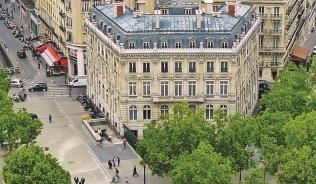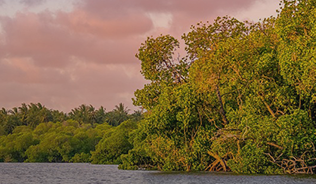I work for a local authority and have spent several years encouraging reluctant residents to recycle. More recently I have been working with the Environment Protection team within the council to help local industries avoid releasing dust and chemical pollutants into the air. However, at heart I am an "old-school" environmentalist who wants to help save the planet, so while I acknowledge my professional work is worthwhile, it annoys me that I cannot work on projects which directly mitigate climate change or promote renewable energy and sustainable development. That's why I work with community groups, which is a great way of utilising otherwise unused knowledge and skills at the same time as expanding my practical experience of environmental topics that I don't get the chance to get involved in during my paid work.
I started local environmental group "Sustainable Caistor" when my children's primary school held an "eco-fair". Over the past four years we have run a varied range of projects to try and capture the interest of different groups and individuals. These included public talks on topics including solar hot water systems, wildlife gardening, solar pv, even commercial composting. Some projects are more successful than others. A local food directory was created and delivered to all 1200 households in the town, but it failed to capture people's imagination, possibly due to poor leaflet design. To encourage protection of the local environment we started a survey of wildlife seen by local residents within a mile of the town. Well over a thousand different species of birds, insects, flowers and mammals have now been identified by residents (including head lice from my daughter - is that allowed?). We manage a small wet meadow area to protect the dwindling wild orchids and we erected an interpretation board. We devised a series of nature trails and published a colourful leaflet for children, this time professionally designed - it has been our most successful project to date. In partnership with the local "In Bloom" group we created a community fruit 'n nut orchard and each year we run a Big Garden Birdwatch on the same weekend as that run by the RSPB. The bias towards wildlife projects reflects the interests of the supporters of the group.
Renewable energy projects can be more controversial and seem to attract a different crowd from the wildlife projects, so I work on these with a different group. A project to evaluate the feasibility of putting an Anaerobic Digestion (AD) plant on an industrial estate in Caistor in order to utilise the food wastes produced there was started at the beginning of 2012. A joint bid, put together by Groundwork Lincolnshire and myself as part of "Caistor Energy Partnership" was successful in obtaining funding from DECC for four pieces of work: an engineering consultancy to produce a feasibility study of having an AD plant; Groundwork Lincolnshire to run a community consultation event to assess the level of community support for such a venture; the Lincolnshire Cooperative Development Agency to advise on setting up a community share issue or industrial provident society to enable the local community to fully benefit; and a local planning consultant to advise on the planning issues.
Unfortunately the feasibility study indicated that the right waste feedstock was not available. However, the project was able to change direction when, following the community consultation event, a local farmer approached us with his plans for an AD plant just outside town and his willingness to work with the community. The Caistor Energy Partnership and Groundwork Lincolnshire together with the farmer, subsequently entered the BIS "Buy Better Together Challenge". Our proposal was that the AD plant would sell its electricity to a green energy company with the proviso that they would offer a special tariff to Caistor residents which we would market for them. We travelled down to London twice to give "Dragon's Den" style pitches and the judging panel liked the idea and gave us a business consultant to assist in finalising the project plan which subsequently got to the final of the competition. Sadly we did not win the funding to progress that aspect of the project, but construction of the AD plant itself is currently nearing completion and it should start generating electricity in couple of months. We are still discussing with the farmer how best to ensure community benefits.
One way of having a lasting environmental impact is to get involved with your local Neighbourhood Plan. I took the opportunity to sit on our Steering Group and became responsible for the sustainability policies. These are concerned with energy efficiency of new developments, wildlife protection and encouraging small to medium scale renewable energy developments. Once a Neighbourhood Plan has been agreed by the community and by the local authority then it has real teeth because it becomes a statutory document which the planning authority must have regard to. It therefore enables a long-term and wide-ranging impact on the future development of your area.
Hopefully I have given a flavour of some of the types of projects that you can get involved with by working with environmental community groups. Any such group will be glad of the professional knowledge that an environmental scientist can bring. There are a lot of exciting things going on across the country, I encourage you to get involved and use you training to really make a difference!





